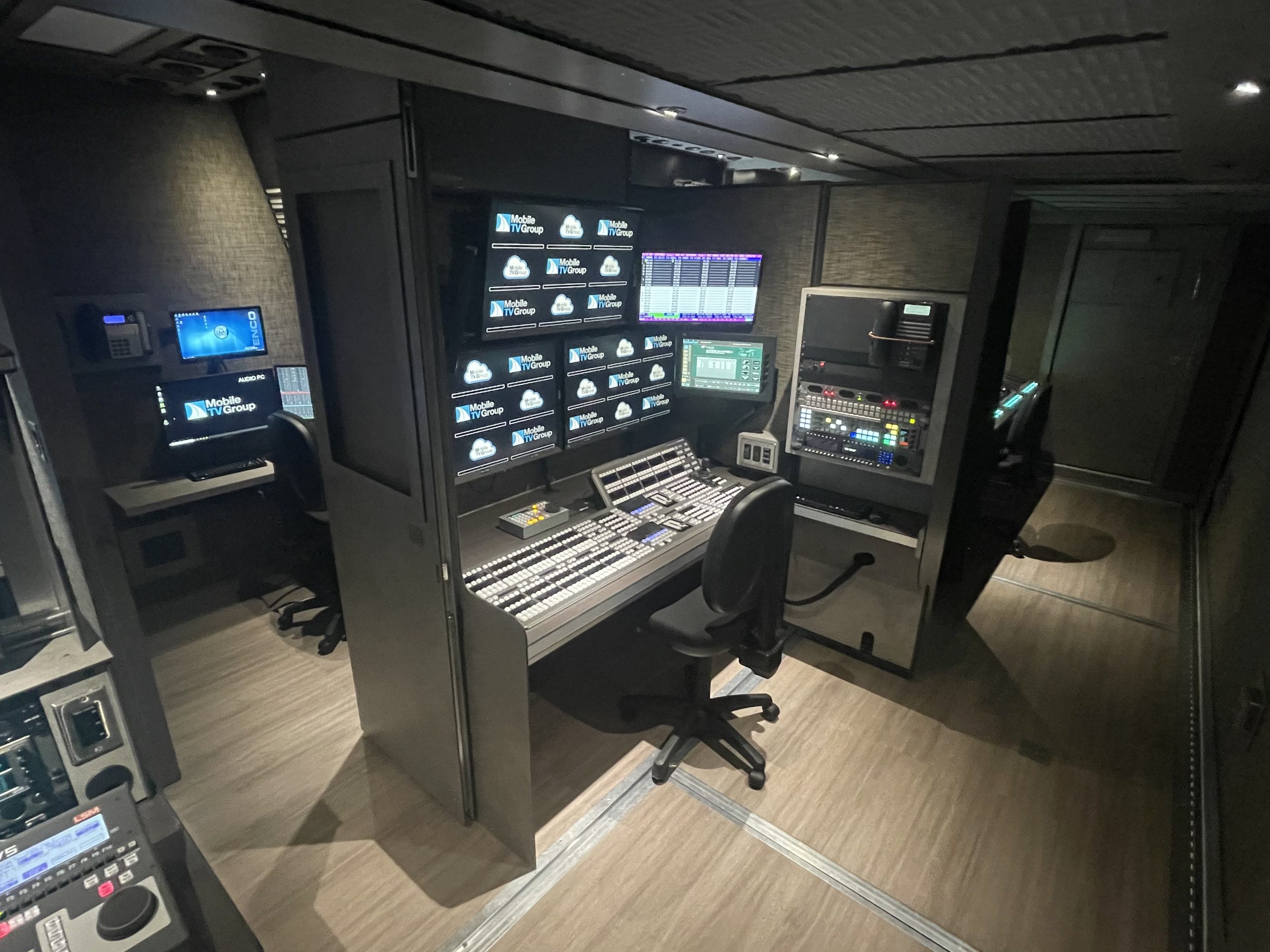With Mobile TV Group’s Cloud Control, RSNs Look To Control Their Own Storytelling for Away Broadcasts
MTVG also launches new 49Flex-CC mobile unit to operate under cost-efficient remote-production platform
Story Highlights
In June, Mobile TV Group’s new Cloud Control remote-production platform officially debuted when Bally Sports North produced its away Twins broadcast from a Cloud Control room at its office in Minneapolis with the MTVG mobile unit onsite at the game in Kansas City. After years of development and extensive testing, this was the first use of the Cloud Control system for a live broadcast.
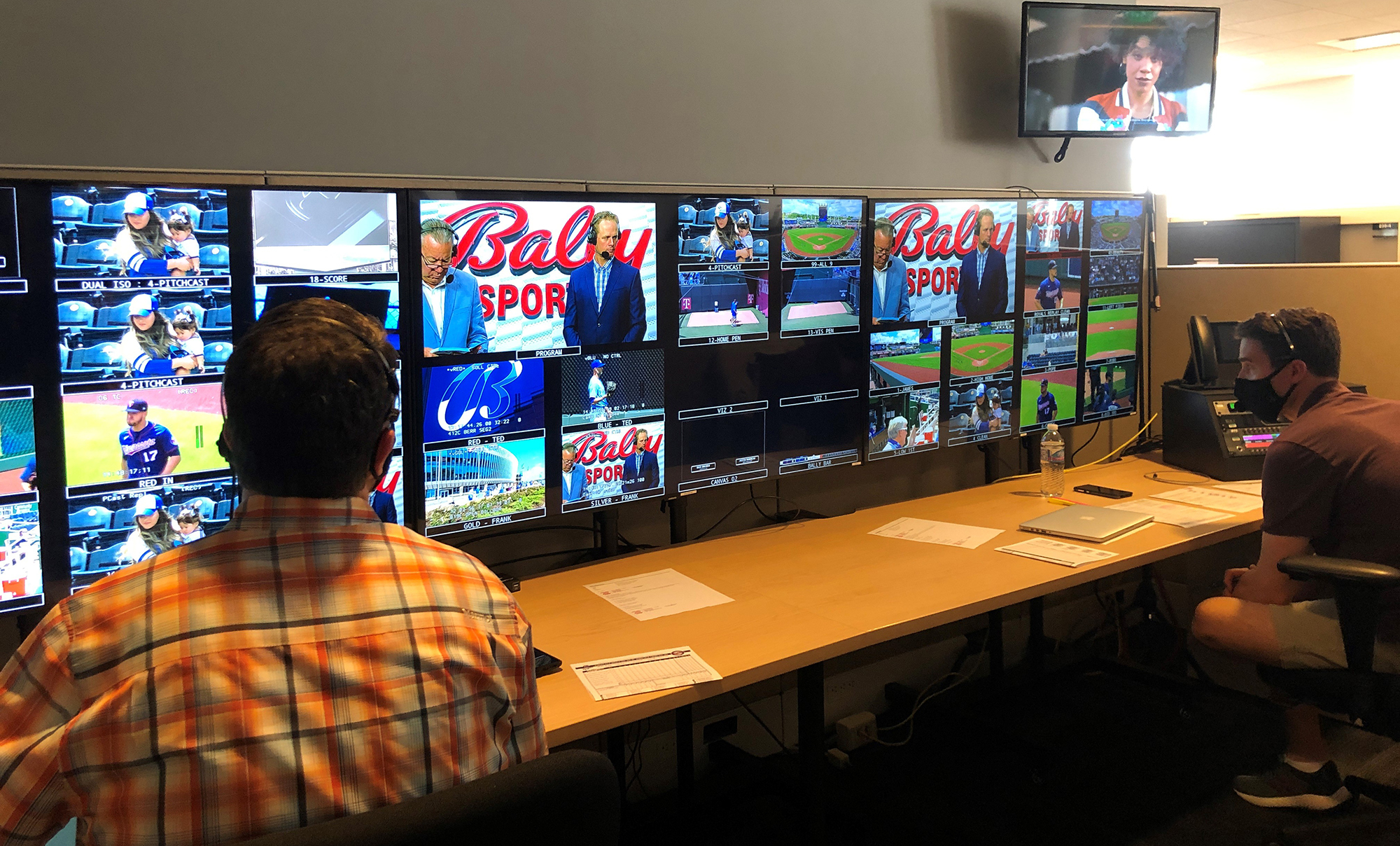
For the Twins-Royals MLB series in early June, Bally Sports North produced its away Twins broadcast from a Mobile TV Group Cloud Control room at its office in Minneapolis.
Cloud Control rooms are now up and running for Marquee Sports Network in Chicago and ATT Sportsnet Pittsburgh. In addition to Minneapolis, CC rooms are in place and being tested at Bally Sports Florida (Fort Lauderdale), South (Atlanta), and Southwest (Dallas), with plans to begin broadcasting next month. Bally Sports’ goal is to have CC rooms finalized and tested at all its RSNs by September, with all in operation for the start of NHL and NBA seasons in the fall.
“I think the industry has welcomed the concept of remote production and now wants the mobile vendors to come to the table with solutions that give the RSNs everything they want but at a lower cost,” says Mobile TV Group CEO Phillip Garvin. “This is the first step towards what we believe the industry wants for the future.”
How It Works: Home Team Onsite, Away Team Remoted In
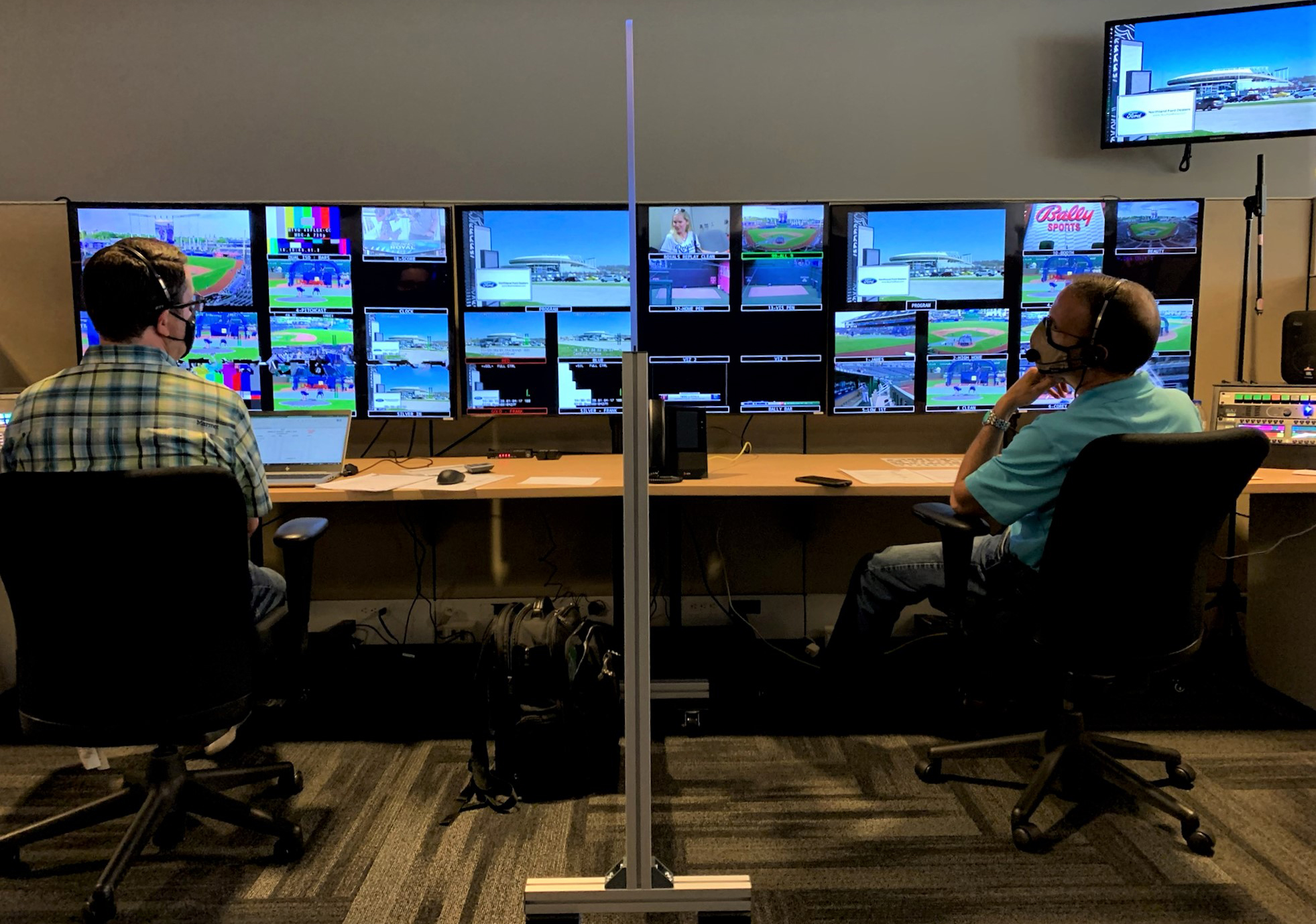
With Cloud Control, the director and producer are able to call the broadcast for away games from a control room at the home office like this one in Minneapolis.
With Cloud Control, the visiting team’s producer, director, replay, graphics, and scorebox operators remain at their office and use control panels to remotely control the technical facilities in the mobile unit at the venue. The mobile unit — typically, a dual-feed unit — provides the home show with a normal full-blown facility while providing the visiting network with a switcher/TD and audio board/A1.
The visiting network avails itself of three dedicated cameras plus all the home show’s cameras, including four super-slo-mos. Two EVS replay servers are dedicated to the visitor, networked to all the EVS servers in the home show, including a super-slo-mo.
“With [Cloud Control], you truly have control of your own show again,” explains Mike Connelly, EVP, production, Bally Sports Networks. “Our producers and directors can cut their own show like they did with the traditional dual-feed model [prior to the pandemic]. At the same time, we’re saving costs by not having to travel our entire [crew] for away shows because [crew members are] located at the [Cloud Control room] in their office.”
An Alternative to the ‘World-Feed’ Model
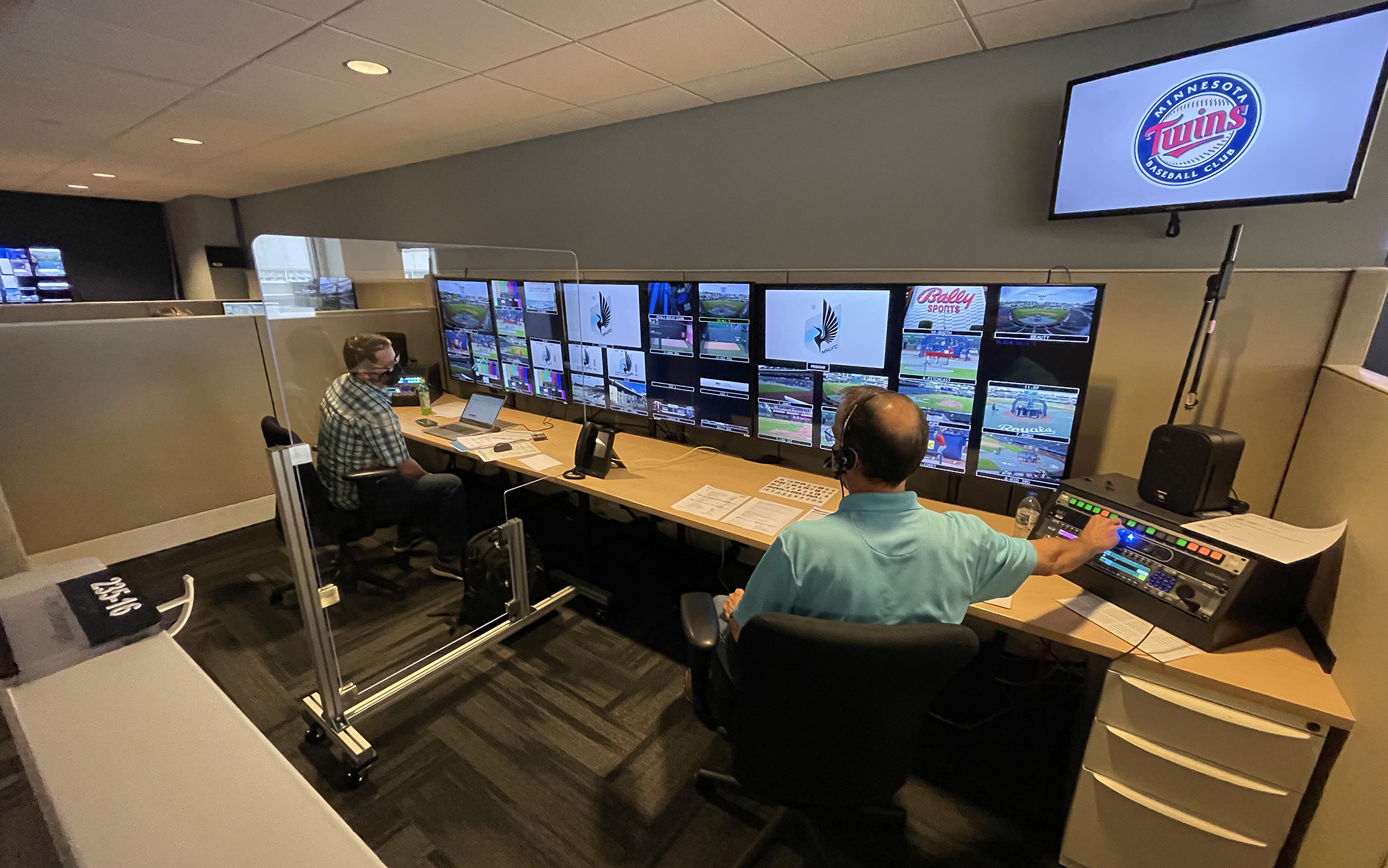
Cloud Control rooms are primarily deployed in what was previously office or conference space at Bally Sports RSNs.
Mobile TV Group serves dozens of RSNs across the country that have been forced to transition to a “world-feed” production model for MLB, NBA, and NHL games due to COVID-related facility/personnel limitations at the venue. As a result, visiting RSNs are largely reliant on the feed produced by the home RSN and are often limited in their ability to tell the away team’s story within the broadcast.
The Cloud Control system is an alternative to that approach, which was commonly used in the past year. With the “world feed,” the home show cannot produce its normal show, and the visitor has access to only a few cameras/sources. With Cloud Control Duals, the home show produces its normal show while the visitor produces its normal visitor show with nearly unlimited access to cameras and sources.
Cloud Control gives visiting RSNs the control over their broadcast that they had under the dual-feed model used by RSNs for the better part of decades — but at a lower cost. Many RSNs, including Bally Sports and others, have embraced this model, looking at it as a way for visiting RSNs to regain the storytelling power they lost to the pandemic.
“If the visiting network has ever done a dual-feed production onsite, the Cloud Control Dual will perform exactly the same,” says Garvin. “We’ve been working to make an efficient and scalable system for nearly three years, and we think this is the right remote-production solution for RSNs.
Combining Quality and Cost

Under the Cloud Control model, Bally Sports’ lead EVS operator can be located at the home office rather than in the truck for away-game productions.
Mobile TV Group provides, installs, and maintains the Cloud Control room for a tiny fraction of the cost of a typical control room. Connectivity between the Cloud Control room and the mobile unit requires only 300 Mb, including access to four super-slo-mo cameras. MTVG has hired Cloud Coordinators to ensure proper communication between the remote-control panels and the mobile unit.
“The goal with Cloud Control was not only to supply a solution to the demand for remote-controlling production systems but doing so at scale,” says MTVG COO Nick Garvin, “You can always throw enough technology at a problem to accomplish a one-off production; but we’ve been working methodically on this to create a system that can be used for 5,000+ events a year.”
He adds that MTVG is currently building a Cloud Control room in the offices of RSNs around the country and they will be set up to easily integrate with all mobile units.
49 Flex-CC: New Mobile Unit Design Embraces Cloud Control
To further enhance the cost-efficiencies of Cloud Control Duals, Mobile TV Group has begun building mobile units that take advantage of remote systems to further lower cost. It recently launched 49 Flex-CC and is building 50 Flex-CC, both of which assume that the visitor’s production staff will be working from their home office.
Since that diminishes space requirements, these new mobile units accommodate a full traditional home show plus positions for the visiting TD, A1, V1, and AD in a single unit. Eliminating the second trailer results in cost savings, which are passed on to the customer.
“The mobile unit has everything that any previous dual-feed mobile unit has had in terms of engineering, capabilities, and facilities but in a more compact footprint because we don’t need all the operator, producer, and director positions [onsite],” says Phil Garvin. “We were able to fit everything we needed into one mobile unit whilst still providing the home show with everything they’re used to having.
“It’s a bit of a sleight of hand what we’ve been able to do by eliminating all those operator positions onsite and shifting them [to the office],” says Phil Garvin. “And it has permitted us to lower our costs and, therefore, costs for our clients with absolutely no loss in production capability other than the fact that visitor-show [operators] are remote.”
He adds that the production and audio rooms for the home show remain the same size and have not had to sacrifice space despite the new layout. Next to the production room is the replay room with space for up to six operators (typically, one replay operator is onsite for the visitor show, with all others in the Cloud Control room back home). Next to that is a dedicated audio room and switcher panel for the visiting A1 and TD. At the end of the mobile unit is space for the EIC, engineering team, and three video-shading positions.
49 Flex-CC is built around an Evertz EXE 2.0 IP core router (84 ports with up to 9,600 GBps) and features a Grass Valley Kayenne K-Frame X IP switcher (7M/E, 96 inputs/48 outputs), with the home-show TD using a 4M/E panel and the visiting TD using a 2M/E panel. The monitor wall in the production room comprises 16 16-in. outboard LCD video monitors.
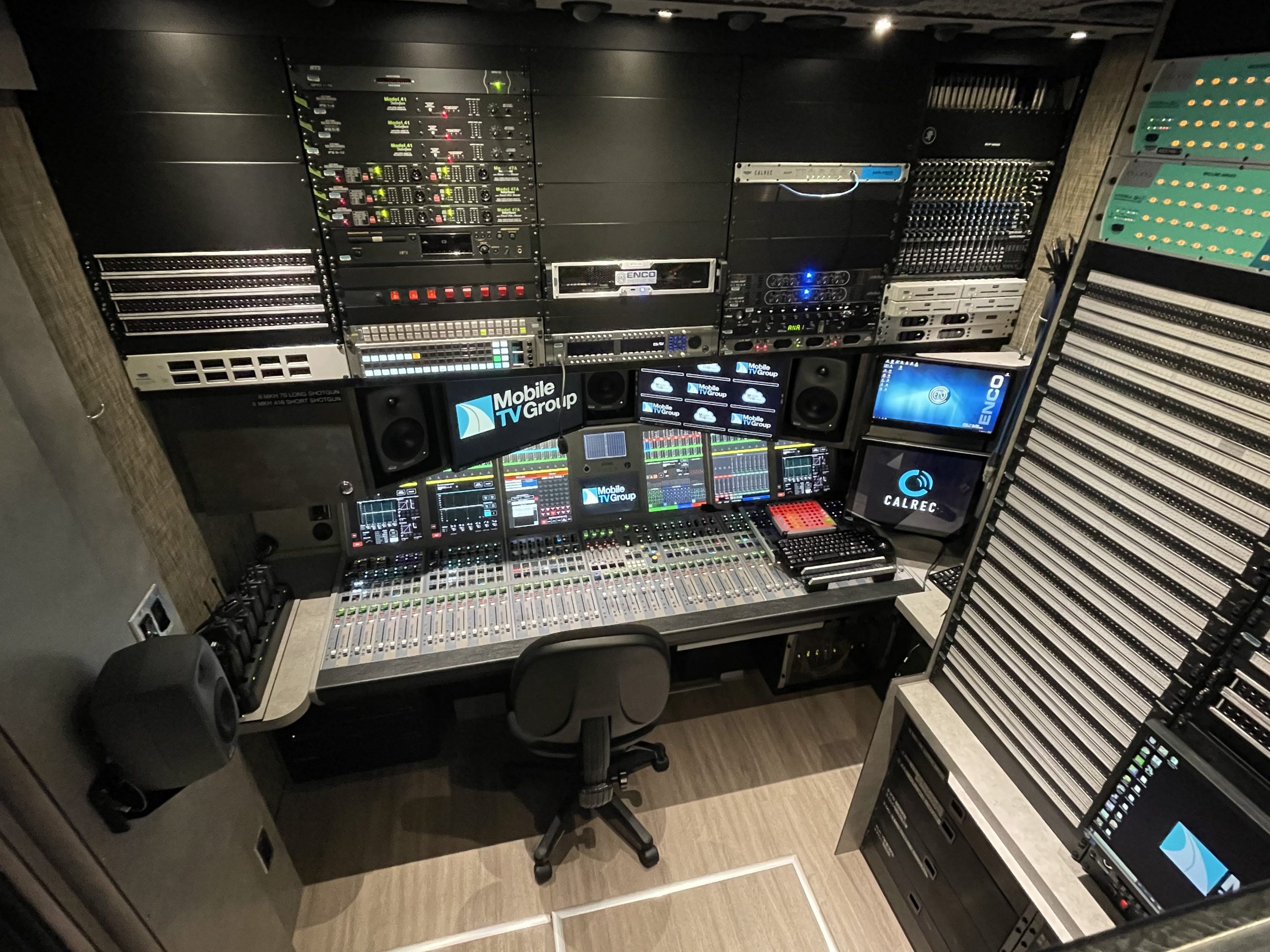
In addition to the main 56-fader Artemis Beam audio mixer shown here, the visiting A1 is provided a Calrec Brio 36-fader console.
The unit is armed with seven Grass Valley LDX82 Premier triax cameras and four LDX86 Universe super-slo-mo fiber cameras with a mix of Canon and Fujinon lenses. On the replay side, the unit is equipped with four 12-channel EVS XT-VIA IP servers and a four-channel EVS XS VIA for SpotBox (two channels per show during dual-feed operation).
The home show uses a Calrec 56-fader Artemis Beam audio mixer, and the visiting A1 is provided a Calrec Brio 36-fader console. An RTS ADAM-M matrix system handles comms (both onsite and with the Cloud Control room at the visiting RSN’s facility), and the unit rolls with primarily Sennheiser microphones and headsets.
“Even with all that [equipment] and those positions in the unit, we were still able to stay within the maximum weight allowed in this mobile unit,” notes Phil Garvin. “So it can move from market to market and do different shows.”

